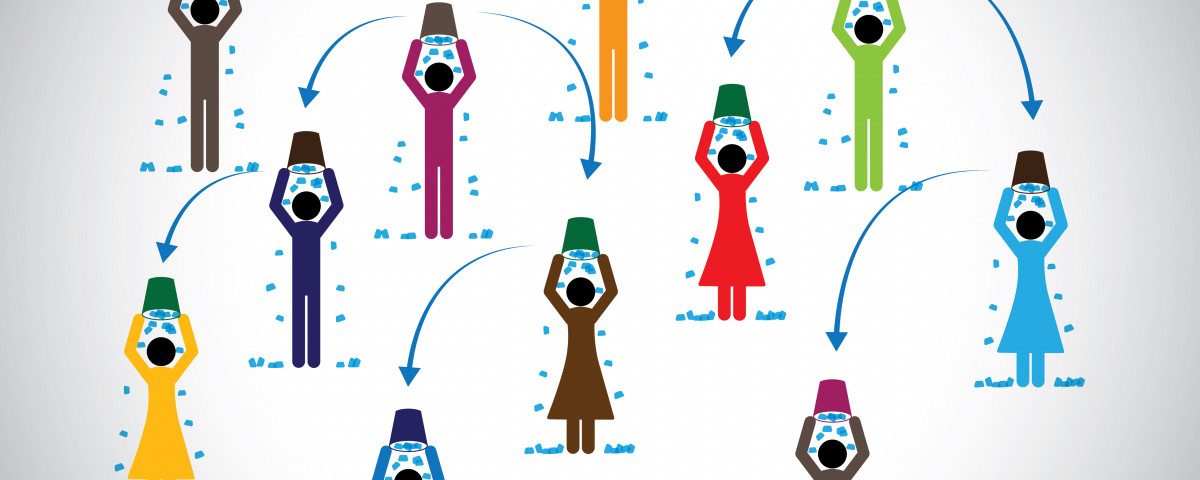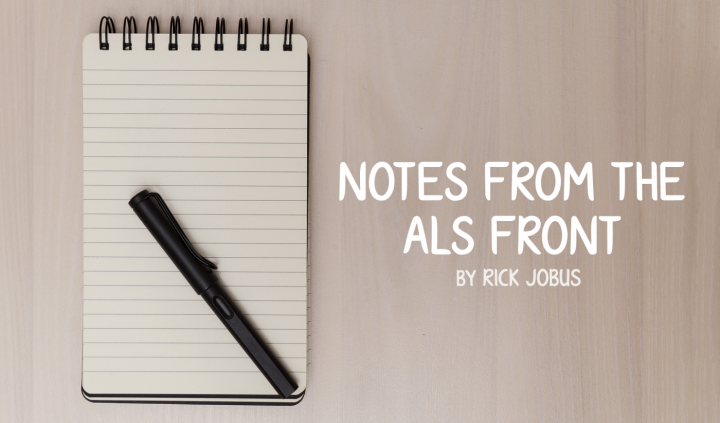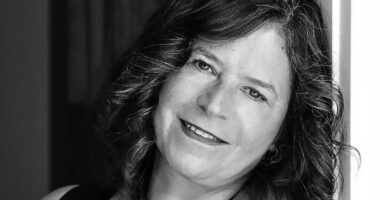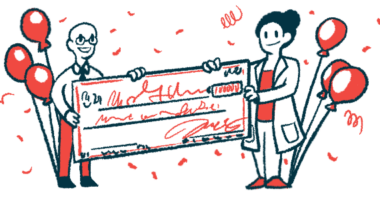My (Ice) Bucket List

“… And up through the ground come a bubblin’ crude.”
Like Jed Clampett of “Beverly Hillbillies” fame, the ALS Association in 2014 found itself in the unexpected circumstance of commanding assets beyond its wildest dreams. The national display of generosity, hope, and compassion dubbed the ice bucket challenge dropped the lion’s share of donations — about $115 million — into the association’s lap. That, per Market Watch, is an unprecedented surge of money for a U.S. nonprofit. That’s the good news.
Now for some bad. I suspect that the majority of ice bucket donors did the challenge in support of a person living with ALS. Naturally, donors were drawn to the notion of rapid advancement toward a meaningful treatment, and ideally, a cure for ALS.
That dream hasn’t happened. As a result, the nonprofit has come under scrutiny and criticism regarding the disbursement of its share of the proceeds. In 2015, prompted by concerns regarding the seemingly less-than-urgent assignment of ice bucket challenge money, I wrote ALS Association Chief Scientist Lucie Bruijn, PhD, with the objective of understanding an announced allocation of partial proceeds from the fund. What follows are her answers (italicized) to two of my questions at the time:
How can any of the 58 research grants receive impactful funding (at less than $200,000 per grant)?
“Our strategy is to invest in multiple projects in the hope that a few will yield significant results and we can further invest in those that show the most promise. Investing all the money in only a handful of projects may result in nothing to show for our investment.”
Why is the aggregate amount committed to research only 67 percent?
“We believe that the best way to expedite treatments is through research, public policy and care services. For example, our public policy program moves forward legislative and regulatory priorities to benefit people living with the disease AND secure additional research funding from the government (which is the largest funder of ALS research). And our Care Services program helps care for people living with the disease, encouraging participation in clinical trials (where a treatment will be found). Together, with research, this integrated approach is essential to creating [a] world without ALS.”
A quick look at the association’s financial statements confirms the measured approach that Dr. Bruijn described. The association’s fiscal year ends on Jan. 31. For FY 2014, it had $20.4 million in net assets on hand at year’s end. For FY 2015, courtesy of the ice bucket challenge, it finished with almost $119.8 million. At the close of FY 2018, it reported about $96.5 million.
So, it has been spending money. In fact, it is doing so at an accelerated pace.
During FY 2014, it spent about $7.2 million on research, plus about $8.5 million on patient and community services and public and professional education. In the three fiscal years since the ice bucket challenge infusion, the average annual investment in research has been $17.8 million (up 148 percent), and for patient services and education, $11.8 million (up 39 percent). Last January, about $16.5 million was committed to research grants through 2023. Additionally, about $84.3 million was tied up in marketable securities (more on that later).
The association’s website also has a listing of its challenge-related research spending. Even a casual skim yields a reminder of the “needle in a haystack” reality of solving the ALS riddle. In hindsight, had the association aggressively depleted funding on only a couple promising therapies du jour, the money would be gone — with no return.
Given that, the ALS Association’s stewardship of the ice bucket challenge windfall was prudent, although I’d still offer it two pieces of advice. First, I’d broaden its mission statement (emphasis mine): “To discover treatments and a cure for ALS ensuring delivery to all sufferers …”
The 2017 approval of Radicava (edaravone) offered a cautionary, predictive lesson in patient access. Some insurance companies made it difficult for patients to get the medication covered. Calaneet Balas, the association’s president and CEO, said, “What they’ve done, for the most part, is to use the inclusion criteria for the clinical trial as criteria for qualifying [patients] for the drug, which is incredibly narrow.”
For example, if the disease duration has extended past two years, a patient could be denied coverage. Balas said that “easily excludes 75 to 80 percent of all ALS patients.”
That leads to my second suggestion for the association, involving the aforementioned marketable securities. Leave a significant amount in abeyance. Specifically, earmark it for any insurance gaps or copayment and coinsurance challenges that ALS patients might face.
Whether through brilliant research or a random discovery, a cure will be found. Let’s not make the distribution of the remedy as daunting as identifying the means to arrest ALS.
***
Note: ALS News Today is strictly a news and information website about the disease. It does not provide medical advice, diagnosis, or treatment. This content is not intended to be a substitute for professional medical advice, diagnosis, or treatment. Always seek the advice of your physician or other qualified health provider with any questions you may have regarding a medical condition. Never disregard professional medical advice or delay in seeking it because of something you have read on this website. The opinions expressed in this column are not those of ALS News Today or its parent company, Bionews Services, and are intended to spark discussion about issues pertaining to ALS.








John Koten
The thinking you describe on the part of the ALS Association would make complete sense if the ALS-A were an investment firm buying stakes in a larger number of small start up ventures. The investors are realistic enough to know that many of the small businesses will fail, but some will hit it big enough to more than offset the losers. This is a reasonable strategy for a firm that seeks to grow and expand indefinitely. But, for a non-profit supporting a scientific medical discovery, the aim is entirely different. The hope, in fact, should be that one day the organization will put itself out of business. The sooner science comes up with the answers, the sooner the nonprofit can complete its mission. and close its doors. Scientific progress necessarily includes failure. I'll repeat that for emphasis. Failure drives progress in science. Why? Let's look specifically at ALS. Right now, ALS researchers are exploring many many potential paths to a cure. Many of these will turn out to be dead ends. But we don't know which ones those are. The sooner the ALS community can find out which approaches are duds, the more quickly resources can be shifted to efforts that appear to be bearing fruit or to new emerging avenues that have yet to be explored. In this light, holding back funds the way an investment firm might makes no sense. It just delays the progress of science. The only real conclusion I can draw with this in mind is that the leadership of the ALS Association is primarily interested in their own survival--or perhaps one day being the organization that gets to claim credit for funding a cure. If I am right, then all your column does is reinforce the self-interested and self-absorbed thinking of the ALS-A.
Rick Jobus
Sadly, if the radicava experience is indicative, I will be denied coverage, due to insurance companies protecting their profits.
Diana Garcia
The purpose of the Ice Bucket Challenge was to fund research, not to build up an investment portfolio. All of it should be spent on research as quickly as possible. If the funds are used up then there can be another challenge. Holding on to that money for years makes absolutely no sense and is totally contrary to the stated goals of the Ice Bucket Challenge. If the ALS Association won't do it, let's start another organization that raises money strictly for research and funnels it out as quickly as it comes in.
John Koten
I happen to agree. I suppose one can debate the intentions of the donors. My understanding was that this money was raised to be spent on ALS research as soon as possible. But the ALSA is not about ASAP. It is too bad the lion's share of the money raised from the Ice Bucket Challenge was entrusted to the ALSA for distribution. Their moral obligation to the intent of the donors is a low priority. Frankly, I think this would also be true of using the funds to help pay for edaravone for patients from whom the treatment is most likely to work--assuming it works at all (which is far from a fully settled matter).
For further information: https://www.marketwatch.com/story/als-patients-are-unhappy-with-how-115-million-raised-by-the-ice-bucket-challenge-is-being-spent-2018-02-14?ns=prod/accounts-mw
Margarita
Let's do it!
Bill DeMay
My opinion as a pALS. As I look at the cost of drug development with the number of end potential customers like myself so relatively low, I can see the issues with the prohibitively high cost of treatment. This is what drives insurance companies, obviously, to have policies of exclusion. It also drives me to self exclude myself.
I would like to see ALS-A have a strong financial presence lobbying and encouraging more public funding for rare disease research. In this way maybe ALS-A funds can be better leveraged for success. As a pure “for profit” population, I am afraid we will never be a highly desirable market.
M C Collet
For years and years before the ice fell, ALSA was a financially healthy organization that ran with <= $20,000,000 in net assets.
Today they run with $100,000,000 in net assets.
Why?
People are dying. Is there no research worthy of investment of that extra $80,000,000 cushion?
And I agree with previous commenters that most who dumped ice and donated intended that their donations would go toward ALS research. Would those people whose dollars are sitting in net assets be happy?
Donor intent matters.
Luz
THIS IS the 3rd. Time I'm trying to denounce the refusal of Miami, Florida dental industry for denaying to attend me, an ALS patient.
I'm suffering with a broken molar and a molar that guests 24/7 for the last 2 months.
I'm intubated and that is the reason for dentists to decline service. They are violating the disability act by fescrimunatibg against an ALS patient. I need your recommendations before I make it public thru the social media and tv news
Doug Harbin
ALS bucket challenge:The COLDEST trick in the book!
Marilyn
Great article that shines lights ht on the ice bucket challenge funds and the ALSA. ALS bankrupts a family financially and emotionally. Families need help with caregiving costs which are not covered by Medicare or insurance. Home health agencies will not take Medicare for caregiving because they won’t make any money. Please help the families of als patients with caregiving reimbursement! Did you know that some als patients do not have an als clinic to attend because their state does not offer one. Yes some are centrally locates to service a regional area but other als patients have to travel for hours to attend a als clinic with a dr and therapists specialized in als. Use the ice bucket challenge funds to change this. Alsa does not provide consistency to patients to be treated. AND the als clinics have to give a portion of their funds to the ALSA. Hmmm
Adele
ALS reaserch in many cases is like fireworks,,,goes in all posible directions. Anyone who has a banch in the lab could get a grant to do reaserch.
Why they do not concentrare on the brain, spinal cord, immune system....?
Why not reflect on RIlutek? This medication is used for decades, a lots of data on hand. Is it effective at all?